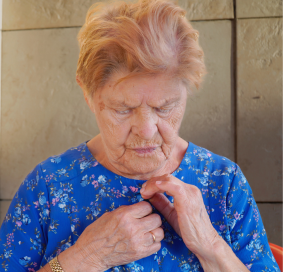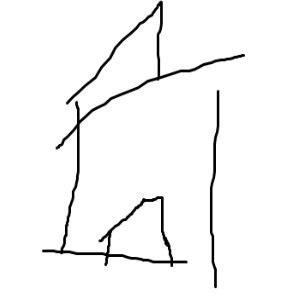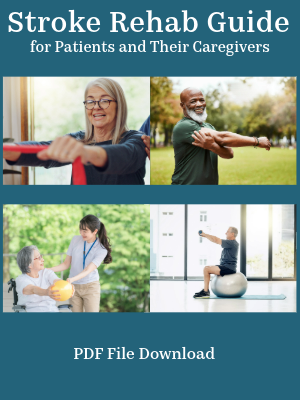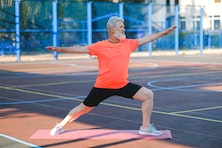What is Apraxia?
Medically reviewed by Karen Murray, OT, CHT, CSRS - written by Stroke-rehab.com
 What is Apraxia?
What is Apraxia?Apraxia that occurs after stroke is due to damage to specific regions of the brain responsible for motor planning and execution. It can manifest in various forms including ideomotor, ideational, constructional, and verbal apraxia (also known as apraxia of speech). The various forms are briefly explained below:
Ideomotor Apraxia
Ideomotor apraxia makes it difficult to perform movements on command even though muscles are strong enough. People with ideomotor apraxia might perform an action automatically without thinking (like waving back when someone waves at them) but struggle to do it when they're asked to or try to do it on purpose.
Ideational Apraxia
Ideational apraxia makes it difficult to plan and complete actions that involve multiple steps such as brushing teeth or making a sandwich. A person might also use the wrong object for a task (like using a toothbrush for hair brushing) because they can't connect the action they want to perform with the correct tool. It's not about forgetting what a toothbrush or a hairbrush is for, but more about a disconnect in the brain between the intention (like brushing hair) and the execution (choosing and using the right tool).
Constructional Apraxia
Constructional apraxia affects a person's ability to put together or organize parts of an object or draw figures and designs. A person with constructional apraxia might find it difficult to draw a basic structure such as a house, not because they don't know what a house looks like, but because their brain has a problem with planning and executing the spatial arrangement of elements.

What is Apraxia of Speech?
Apraxia of speech affects a person's ability to say words correctly, not because they have weak muscles or don't understand language, but because their brain has trouble planning and coordinating the movements needed for speech.
Apraxia vs Ataxia
Apraxia is a motor disorder caused by damage to the brain. In apraxia, the issue is not with muscle strength but with the brain's ability to plan and execute movements. People with apraxia understand what they want to do and have the physical ability to do it, but they struggle to perform the movements correctly. This can affect various activities, from speaking to using tools correctly.
Ataxia, on the other hand, is a condition that affects coordination. It is often due to damage to a part of the brain called the cerebellum, which plays a key role in controlling muscle coordination. People with ataxia may have unsteady movements and difficulty with tasks that require precise coordination, like walking, picking up objects, or writing. Their movements can appear jerky or uncoordinated, and they might have trouble maintaining balance.
While apraxia is about difficulty planning and executing movements, ataxia is about a lack of coordination and control over those movements. Both are related to brain function, but they affect movement in distinct ways.
Apraxia vs Aphasia
Apraxia of speech is a motor speech disorder. It happens when a person has difficulty making the precise movements needed for speaking, even though their muscles are fine. This difficulty is not because of weakness or paralysis in the speech muscles, but rather because the brain has trouble planning and coordinating these movements. A person with apraxia of speech knows what they want to say, but they struggle to physically say it because their brain can't properly direct or coordinate the movements of their lips, jaw, tongue, etc. Their speech might be slow, sound broken, or be hard to understand.
Aphasia, on the other hand, is a language processing disorder caused by damage to parts of the brain responsible for understanding and producing language. It affects a person's ability to communicate effectively, which can include speaking, understanding others, reading, and writing. There are different types of aphasia, and they can vary widely in severity.
What is Apraxia Treatment?
An individual who has apraxia due to a stroke should consult with occupational, speech and physical therapists for treatment. Strategies that may be used by caregivers at home to help with apraxia or used by therapists for treatment may include some of the following:
- Use step-by-step verbal instructions for tasks.
- Break down activities into smaller, manageable steps and practice them repetitively.
- Use mental practice and visualization techniques to improve motor planning. Have patients imagine performing specific tasks, gradually building up to actual physical practice.
- Hand-over-hand guidance, physically guiding the stroke patient's movements to facilitate learning of motor tasks.
- Create visual cues for daily tasks. Use pictures or diagrams to illustrate the sequence of actions required.
- Focus on relearning motor skills through practice and repetition.
- Use technology like virtual reality or video games that encourage movement and coordination.
- Implement speech therapy exercises focusing on the coordination of mouth and speech muscles.
- Practice producing specific sounds, progressing from easier to more difficult ones.
- Use of visual aids and tactile feedback to guide correct tongue and lip movements.
- Use singing or melody to improve speech.
- Control the rate of speech to enhance clarity by using metronomes, tapping, or visual cues to regulate speech pace.
- Focus on frequently used phrases or personally relevant scripts to facilitate natural speech.
- Provide visual, auditory, or tactile cues to assist in producing the correct speech sound.
Examples include mirror therapy, hand gestures, or touch to cue speech sounds.
- Consider counseling or therapy to deal with the emotional impact of apraxia.
- Use augmentative and alternative communication (AAC) devices such communication boards or tech aids for those struggling with speech.
Is Full Recovery from Apraxia Possible?
Whether a person can full recovery from apraxia after stroke is not not something that can be predicted. Some people may see significant improvements, especially with early and consistent therapy, while others may have lingering effects. Regular therapy, practice, and support can greatly enhance the chances of improvement.
Apraxia after a stroke presents significant challenges, but with targeted strategies, exercises, and the right support, individuals can make meaningful progress. It's important to use all available resources to navigate this complex condition effectively.
Resources, Websites, and Support Groups for Apraxia
Websites About Apraxia
- Strokengine (https://strokengine.ca/en/consequences/apraxia/)
- American Speech-Language-Hearing Association (asha.org)
- National Aphasia Association (www.aphasia.org/aphasia-resources/apraxia-posters/): materials that can be used to help others understand apraxia.
Stroke Survivors Apraxia Group:
Article About Apraxia:
- Acquired Apraxia of Speech: A Treatment Overview https://leader.pubs.asha.org/doi/10.1044/leader.FTR2.16052011.16
Video About Apraxia Treatment:
- CAAST treatment for apraxia and aphasia: https://www.youtube.com/watch?v=NEw-X2JsLA4
AAC Devices for Apraxia:
Other Resources: for What is Apraxia(
Get Our Stroke Rehab Guide

Our stroke rehab guide is designed specifically for patients and caregivers. It's in pdf format and can be immediately downloaded. It includes about
- Stroke Definition & Causes
- Stroke Treatment
- Rehabilitation Information for Physical, Occupational and Speech Therapy
- Exercise pictures
- Q&A from patients and caregivers
- Adaptive Equipment & Techniques
- How to Prevent Another Stroke & More!
Medical Disclaimer: All information on this website is for informational purposes only. This website does not provide medical advice or treatment. Always seek the advice of your physician or other healthcare provider before undertaking a new healthcare or exercise regimen. Never disregard professional medical advice or delay seeking medical treatment because of something you have read on this website. See the disclaimer page for full information.
- Home
- Apraxia













